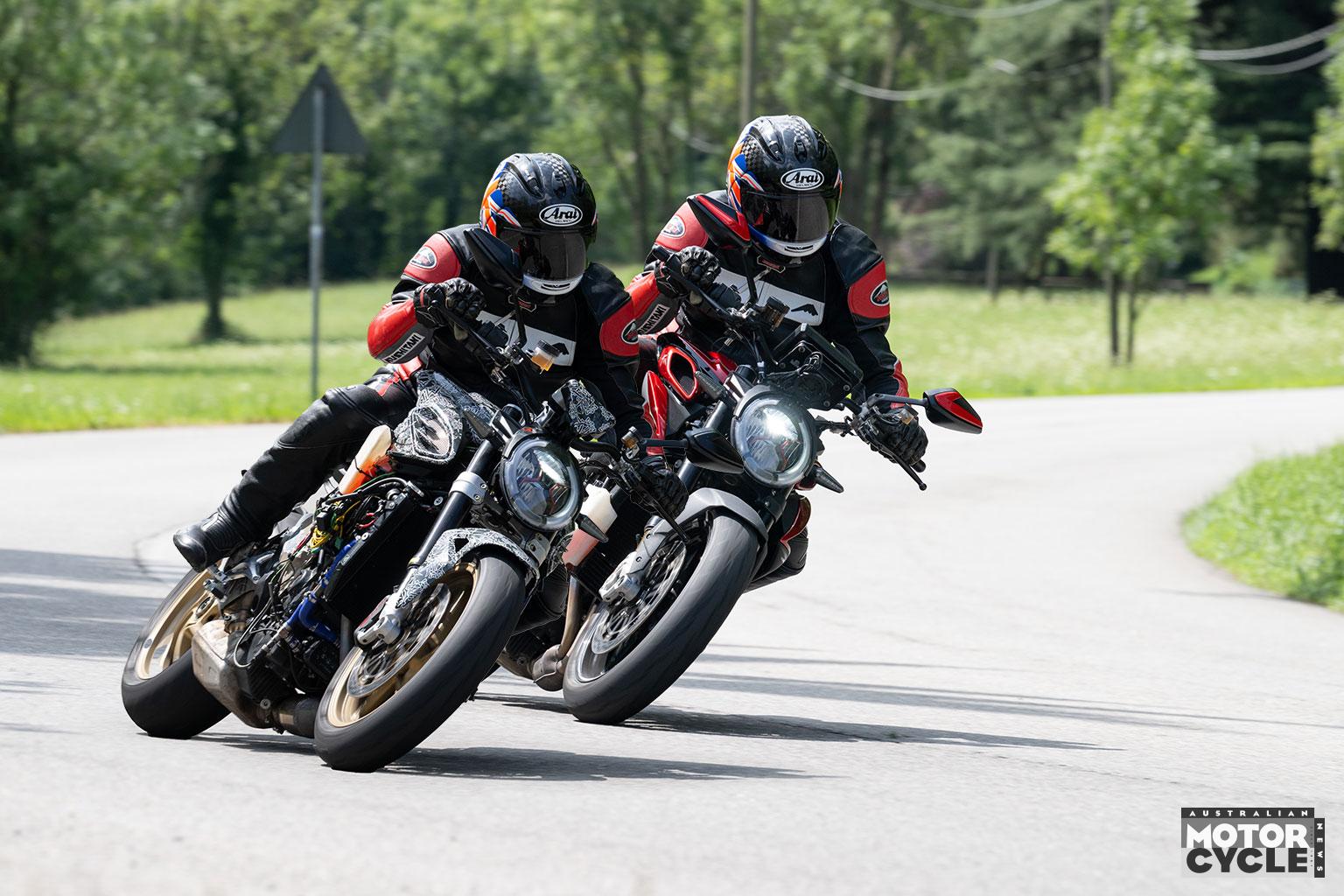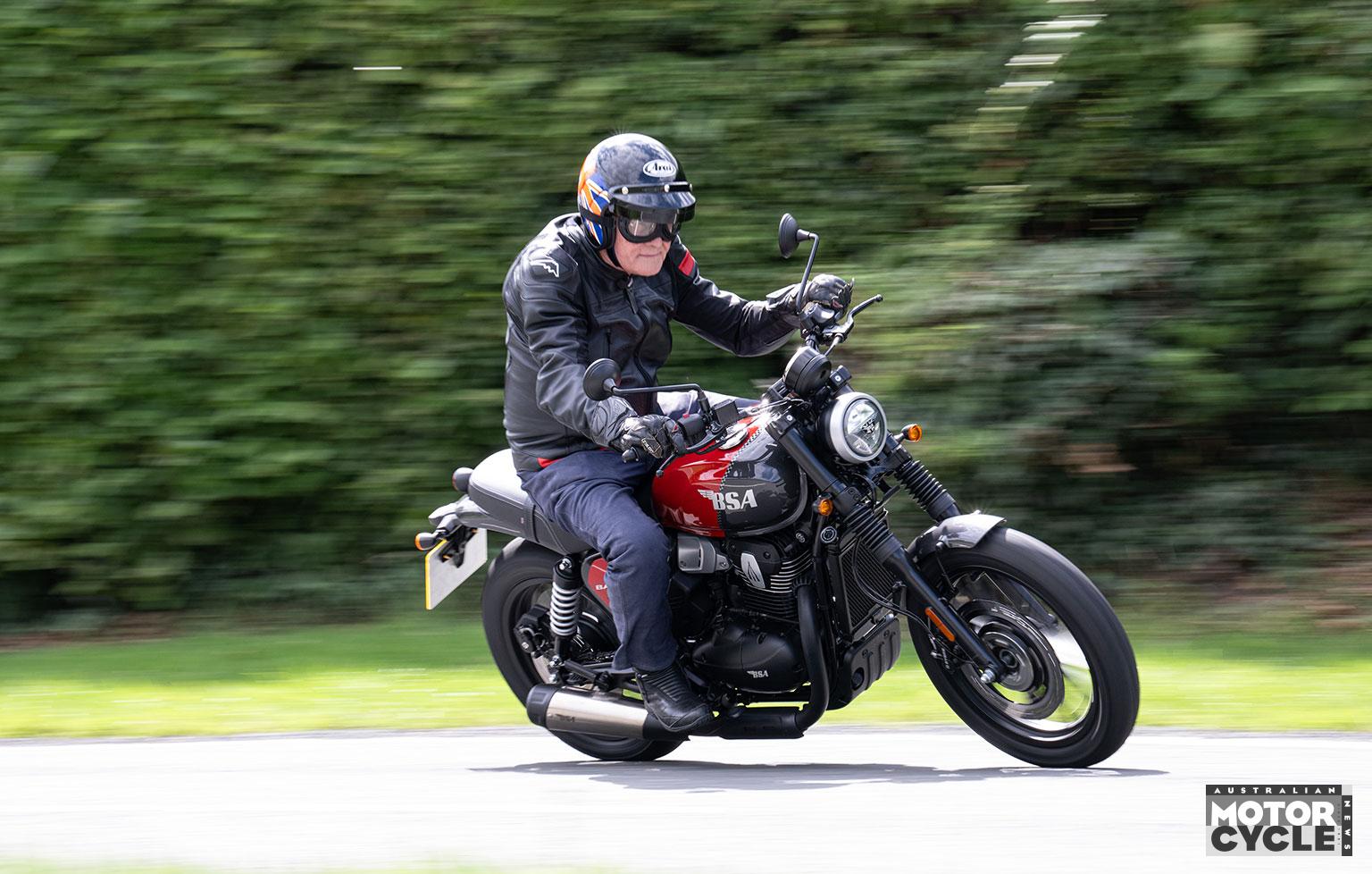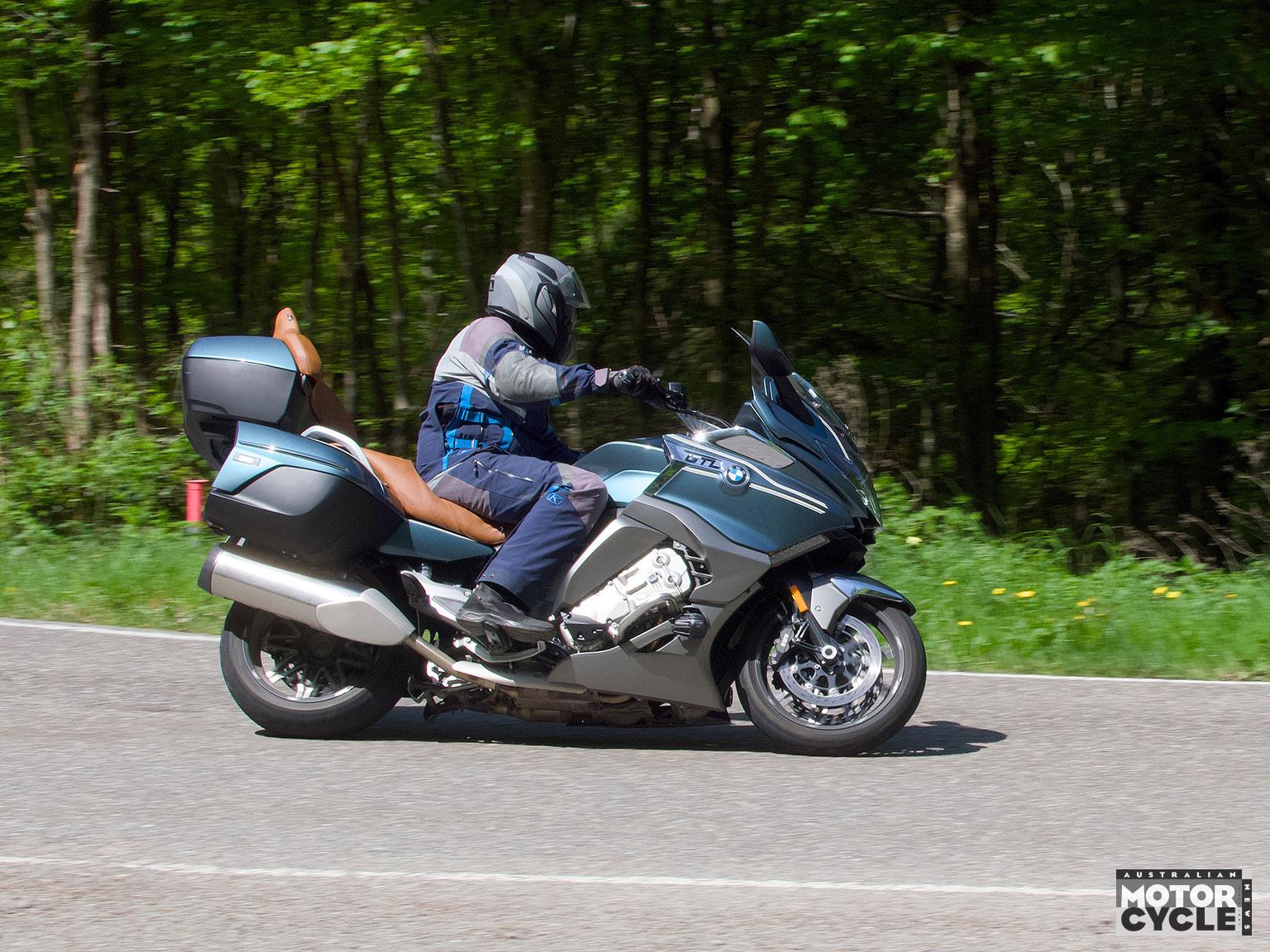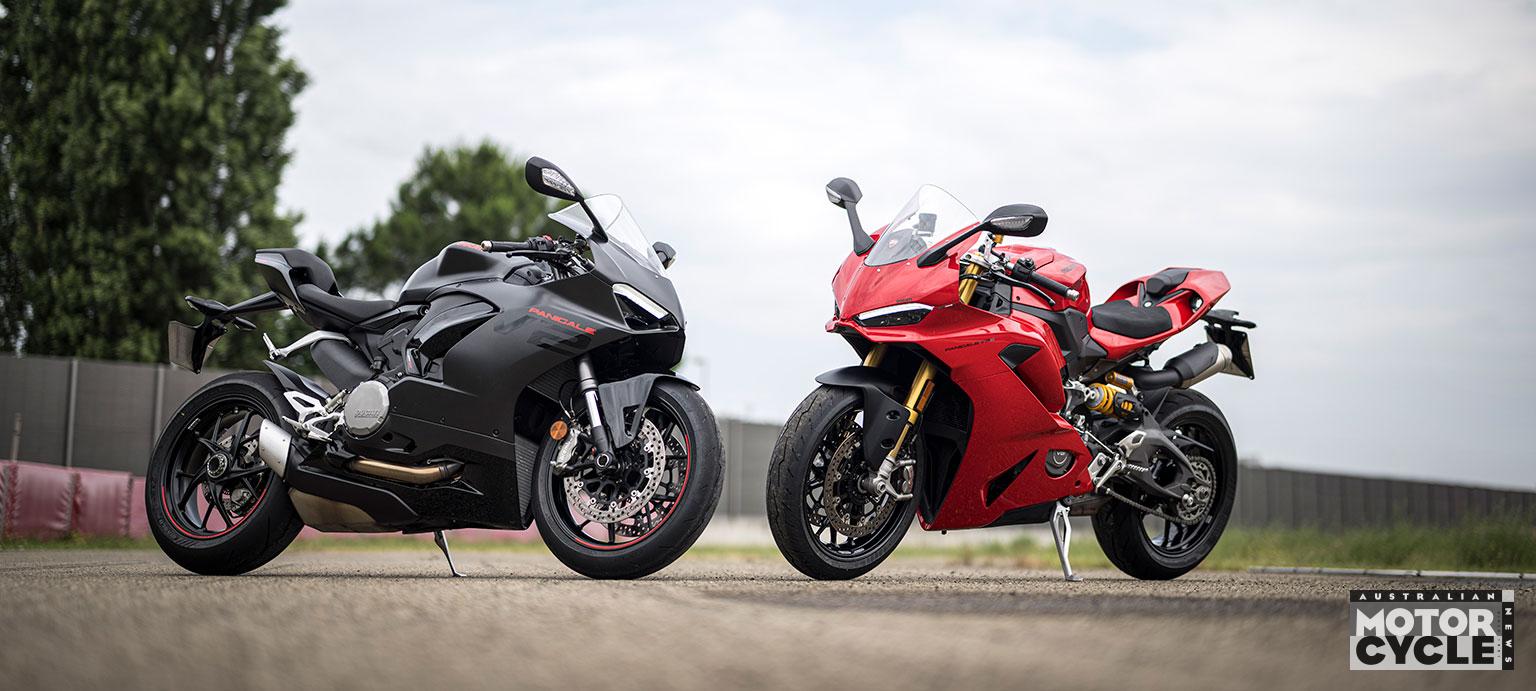Before you can walk, you must crawl. Is the RS 457 step one to becoming a track star?
When you’re just starting out, looking at all the different learner bike options can be a real head scratcher. Even once you narrow your focus down to something sporty, it’s still a bit of a minefield. Aprilia has something new that stands out from the pack: the RS 457.
While being a bit of a pioneer in the small-capacity sportsbike category in the past, Aprilia is re-entering the fold with a bold new ground-up design that capitalises on years of small-bike racing experience and makes it accessible to new riders.
According to Aprilia, the 300-500cc market is “where it’s at” globally. So, in turn, the RS 457 has been designed to fit the needs of riders all over the world. It aims to offer a premium sportsbike with performance and technology derived from MotoGP and make it available for newer riders to enjoy on the road and on the track.

The RS 457 takes a lot of its design cues from the very successful RS 660. To the untrained eye it looks identical to its larger sibling. Dominating the look is the MotoGP-inspired aero fairings with equally MotoGP-inspired graphics. It looks sleek and purposeful from any angle. The side fairings are a dual-wall design that allows air to flow between the two layers, channelling it more effectively around the rider for less drag.
The race inspired and developed aluminium frame is a standout in the class and attributes heavily to the bike’s handling, performance and low weight. To keep said weight down, the engine is load bearing and acts as part of the bike’s structure, offering extra stiffness without adding undue weight to the chassis. The swingarm is a steel unit but is crafted beautifully to look like alloy.

Years of 125cc and 250cc racing dominance did not go to waste when it comes to designing a sporty chassis. The suspension is a budget version of Kayaba equipment. A 41mm inverted fork up front is pre-load-adjustable only and the rear monoshock is also adjustable for preload only.
Braking is taken care of with ByBre components similar to those found on KTM’s 390 Duke.
From the front, Aprilia’s unmistakable triple LED headlight design sits above an aero winglet reminiscent of Aprilia’s MotoGP racebikes. The front indicators are built into the headlight cluster for that extra sleek look. The exhaust system is tucked away under the engine for low centre of gravity in keeping with the race-bred look. TheRS 457 is a seriously good-looking motorcycle.
Powered by a 457cc forward-facing parallel twin – essentially the front half of an RSV4 Superbike engine – the double-overhead-camshaft head houses four valves per cylinder. It produces 35kW (47hp) of power and 43.5Nm of torque. As it only weighs 175kg wet, this gives the RS 457 the highest power-to-weight score of the category (just) and even the RS 660 in LAMS spec.

The engine is more than just a “sleeved-down” RS 660. The 457cc version has no external cooling pipes and oil lines, as they are integrated into the engine block, keeping things nice and tidy while improving reliability. The gearbox shares some technology from the Aprilia V4 engines to reduce friction – like the use of special roller cages instead of bushes, as well as an improved gearbox lubrication system. There’s also DLC-coated piston pins and timing cups, roller bearings in the water pump and countershaft to reduce friction and increase fuel efficiency.
Tech wise, the 457 is well appointed for the price point. The ride-by-wire throttle is similar to those found on much higher-spec bikes. This allows for a sophisticated traction control system to be used, as well as selectable ride modes, which are accessible on the fly and change the power mode, traction control level and ABS intervention. TC can be turned off and ABS can be deactivated on the rear wheel for skids and track use.
The 5-inch colour TFT dash is the control centre for the bike. It’s well laid out and will be very familiar to Aprilia owners. The controls are backlit for ease of use at night too.

To put the RS 457 to the test, we headed out onto a go-kart track to highlight its true performance capability. Jumping on it for the first time, I immediately felt the short reach to the clip-on ’bars. The riding position is sporty but not aggressive. The foot pegs felt high enough for ground clearance and everything was where it should be. The cockpit looks fantastic, the large alloy top triple clamp looks fit for MotoGP and the dash screams racetrack. I set the ride mode to sport, pulled the clutch in – which feels very light – selected a gear and away we went.
The engine felt very lively and willing to rev. I set about warming the tyres up before cutting loose. The 457 feels very light and is pleasant to ride at a steady pace. While only using the first three cogs, the gearbox feels very positive and responds best with a bit of clutch on the downshifts. On the way up, a flick of the throttle hand is enough to release the load from the ’box and click the next gear. The brakes felt a bit woody, but as they got some heat into them, started to feel a bit stronger.

As I increased the pace, it wasn’t long before my knee touched the ground and I started to feel at home on the little bike. I say “little”, but there was plenty of room for me at 175cm tall.
Pushing on, I was quite impressed with the power delivery; I could ride the whole track in third gear and there was heaps of torque still available. Aprilia tells me that 82 percent of the maximum torque is available at just 3000rpm and I believe it. It’s quite surprising how well it pulls from down low for a small engine.
The RS loves a wheelie from low down in the revs; in first gear it’s just a stab of the throttle and up it comes. In second gear, a little clutch is required. (Make sure the TC is off though, as you won’t get any lift with it on.)

The handling is very precise. Even if you decide to change line mid-corner, it’s very accommodating. I found it hard to fault the chassis at all. It went exactly where I pointed it, lap after lap as my pace increased.
The first limitation I found was the edge of the tyres. They’re branded Eurogrip with Aprilia logos on them. I’m told they are manufactured in India. They work quite well, but on the very edge of the tyre they are a bit squirmy as you crack the throttle.
The next limitation I found was the ABS system on the track. It works very well, but if you skid the rear end a little while entering a corner, the front brake eases off. This pushed me a little wide so I turned the rear ABS off – problem solved.

On the go-kart track I was only getting into third gear with a top speed of about 110km/h at the end of the straight. The engine was happy to rev out over and over again; the power delivery was smooth and predictable right up to the redline. On the overrun, the exhaust pops and cackles a little bit, which is cool, but it is very well behaved generally. I was unable to fault the suspension at all unless I overrode the bike. Keeping in mind that the track was quite smooth, the only way I was able to upset it was to take it from full lean one side and slam it all the way over into the opposite direction. With my 95kg on board it pumped the rear shock a bit before it settled in, which I think is fair for this kind of bike. It’s far from being full race suspension. Either way, I’m riding the wheels off the bike and it’s taking everything I’m throwing at it.
I backed it into corners, chucked wheelies and followed other bikes way too close… and the suspension didn’t fade. The rider and my knee sliders were wearing out before the bike showed any weakness. I was impressed after that session.
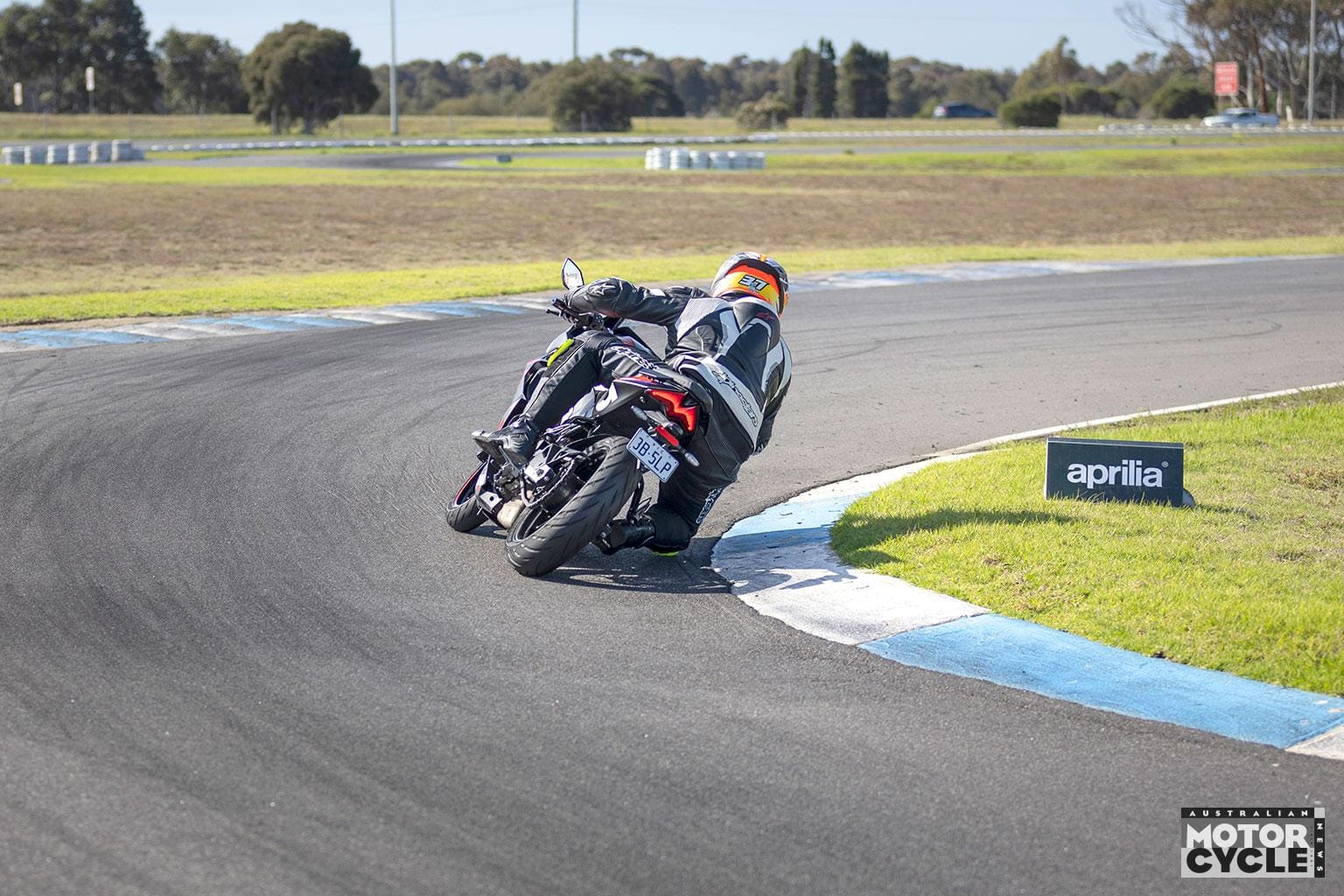
Heading out onto the road to test the RS 457 in the real world, I was similarly impressed. Through traffic, the clutch is super light and predictable. The engine torque is great for cruising along in higher gears. I selected the Eco mode, which smooths out the throttle response. All the power is still there but it’s more progressive.
Out of town and up to highway speeds (and above), the 457 has plenty of legs: 5500rpm is dialled up at 110km/h in sixth gear. You could cruise all day at licence-losing speeds if you so wanted. The fairings do a great job of reducing fatigue from the wind. It’s no Goldwing, but it’s a pretty good place to be.

On some average surfaces found on country roads, the RS did buck me out of the seat a couple of times, but nothing too wild. I think the suspension tune is a good compromise to be able to handle a track day and then head off on country roads and not ruin your day. Comfort is decent for a small bike. I’m not that tall but with the clip-on ’bars mounted above the top triple clamp, there isn’t a heap of weight on your wrists. I could easily get through a tank of juice in one stint I think, which would be over 300km, depending on the speed you maintain.
In summary, the RS 457 delivers exactly what it says on the box. I wish these bikes had existed when I was a young’n. For a bike designed for such a range of countries and assumed use, it really does perform well. I would happily commute on it and know I could still have an absolute blast on a smaller racetrack on it. I would only make a couple of changes: sticky tyres and better front brake pads. Oh, and maybe a nice exhaust, even though it does sound like a slightly smaller and muffled RSV4 in standard trim.
If you’re new to riding and see yourself getting onto the track and learning the ropes, the RS 457 could be just the ticket to becoming the next Top Gun Maverick Vinales at your local track.

PROS: Sweet engine. Looks fast standing still. Agile handling. As good on the racetrack as it is on the road.
CONS: Premium price tag. Quickshifter + MIA should be standard. Front brakes a bit lacklustre.
Tech guru
THE LEVEL of tech available on the RS 457 is top of the class. The three ride modes change throttle response, TC intervention and ABS intervention. Sport is the most aggressive throttle map, with the least amount of TC. Eco is the middle setting with a softer throttle and middle setting for the TC. Rain mode is the softest throttle mode with full TC intervention. In any mode, the TC can be changed via the left switchblock on the fly. If you want to turn ABS off to the rear wheel, you will need to be stationary.
The MIA (Multimedia interface) is an optional accessory. This allows you to connect your phone with the Aprilia app installed and unlock extra functionality through the dashboard including speed limit display, navigation, music control, phone calls, service information and ride tracking. All of this is displayed through the full-colour TFT dashboard, which wouldn’t be out of place on the highest-spec bikes.

Make it yours
THE RS 457 is only just hitting the road, but Aprilia has already developed many add-on options to make yours a little bit special. If you’re planning on track days, add racing brake pads ($333.25); up-and-down quickshifter ($441.20); tank protection stickers ($163.85 and $66.90); passenger seat cover ($155.85); and front axle protectors ($138.50). If you want to do a bit more commuting and touring, spec your bike up with a USB socket ($38.50); tyre pressure monitoring system that talks to the dashboard ($456); a high windscreen ($125); pannier bags and pannier mounting system ($1154.15) or a tank bag ($482.50); comfort rider’s seat ($298); and Aprilia Multimedia Interface Accessory MIA ($208.20 + $73.75).

Specifications

ENGINE
Capacity 457cc
Type Forward facing parallel-twin,
8-valve, DOHC
Bore & stroke 69 x 61.1mm
Compression ratio Not given
Cooling Liquid
Fueling EFI, Delorto throttle bodies, Ride by wire
Transmission Six-speed
Clutch Wet, multi-plate, slipper
Final drive Chain
PERFORMANCE
Power 35kW (47hp) @ 9400rpm (claimed)
Torque 43.5 Nm @ 6700rpm (claimed)
Top speed 195km/h (estimated)
Fuel consumption 4.1L/100km (measured)
ELECTRONICS
Type Bosch ABS, Marelli ECU
Rider aids ABS, Traction Control, ride modes Eco, Rain, Sport
CHASSIS
Frame material Aluminium
Frame type Dual beam
Rake 24 degrees
Trail 102.4mm
Wheelbase Not given
SUSPENSION
Type Kayaba
Front: 41mm upside down fork, adjustable preload, 120mm travel
Rear: Monoshock, adjustable preload, 130mm travel
WHEELS & BRAKES
Wheels aluminium
Front: 17 x 3in Rear: 17 x 4.5in
Tyres Eurogrip Protorq Extreme
Front: 110/70 ZR17 (M/C 54W)
Rear: 150/60 ZR17 (M/C 66W)
Brakes ByBre, ABS
Front: Single 320mm floating disc, 4-piston radial caliper
Rear: 220mm disc, single-piston caliper
DIMENSIONS
Weight 175kg (Wet, claimed)
Seat height 800mm
Fuel capacity 13L
SERVICING & WARRANTY
Servicing First: 1000km
Minor: 6000km
Major: 24000km
Warranty Three years
BUSINESS END
Price $12,540 (Ride away)
Colour options Prismatic Dark, Racing Stripes (+$400 as tested) Opalescent Light
CONTACT
www.aprilia.com/au_EN/

